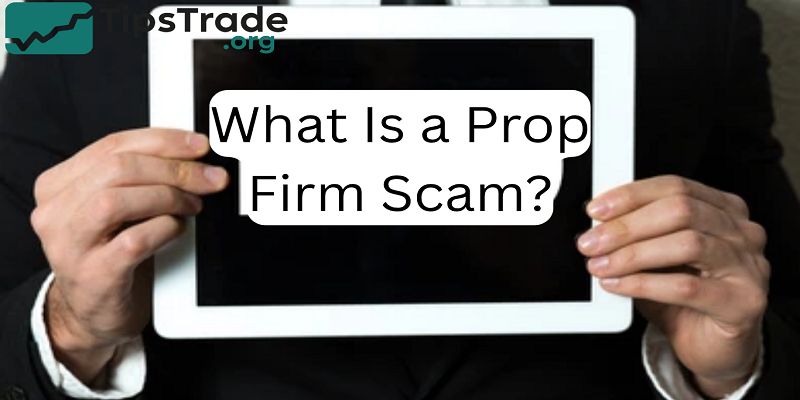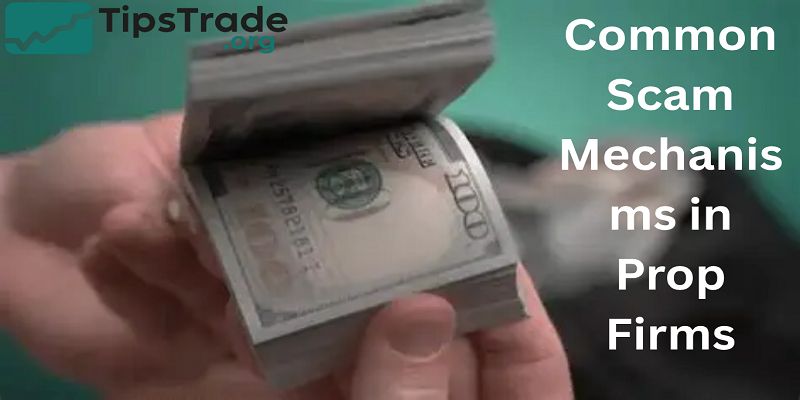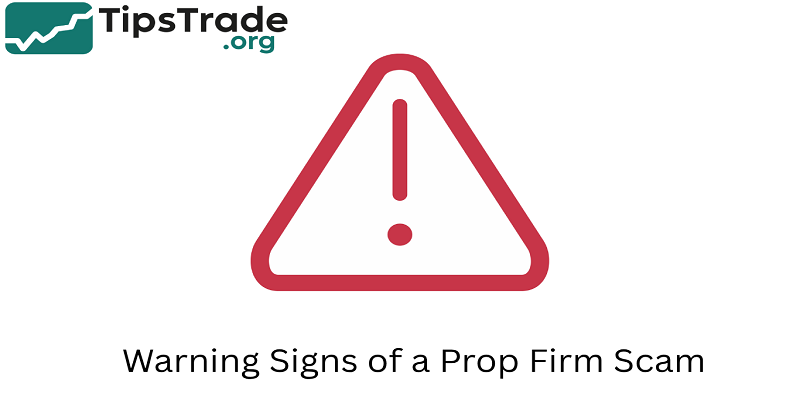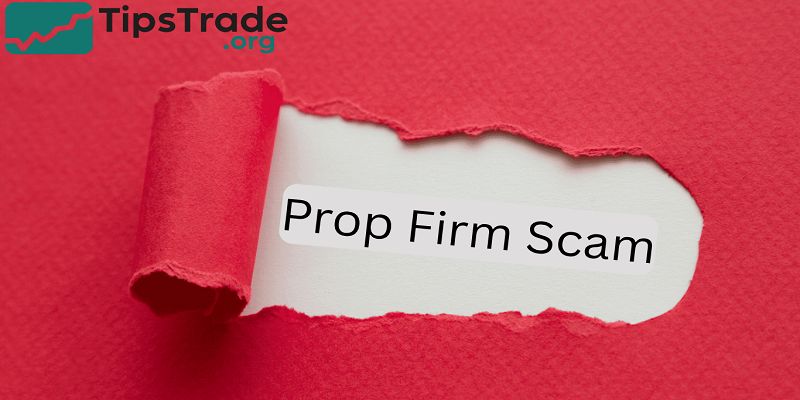Prop Firm Scam refers to deceptive practices or fraudulent activities conducted by certain proprietary trading firms that take advantage of aspiring traders. As the popularity of prop firms has grown, so has the number of dishonest companies that lure traders with false promises—such as instant funding, exaggerated profit splits, or risk-free evaluations. These scams often charge high entry fees, manipulate trading platforms, or deny payouts to prevent traders from earning legitimate profits. Understanding the nature of prop firm scams is crucial for traders who want to protect themselves, identify trustworthy firms, and pursue genuine opportunities in the trading world.
What Is a Prop Firm Scam?

- A prop firm scam refers to any proprietary trading operation that intentionally deceives traders for financial gain. These firms often market themselves as “funded trader programs” but never intend to pay profits or offer genuine trading access.
- In legitimate models, a prop firm evaluates traders via challenges, verifies performance, and then allocates real or simulated capital for profit-sharing. However, scam firms twist this idea. They profit exclusively from trader entry fees, constantly change rules, or manipulate trading data to ensure most participants fail.
- Common indicators include fake company registration, misleading advertising (“guaranteed funding”), and lack of payout transparency. The scam thrives because traders—especially beginners—are eager to access large capital quickly.
Why Do Prop Firm Scams Exist?
- The surge of retail trading during 2020–2024 created a perfect environment for scams. Thousands of new traders searched “how to get funded,” while prop firm startups mushroomed overnight. Since regulatory oversight for prop firms is minimal, scammers exploit this gap.
- Many “firms” run solely on evaluation fees, earning thousands from failed challenges rather than real market trading. In other cases, owners create clone websites mimicking trusted brands to steal card information.
- According to Finance Magnates (2024), at least 40 unregistered firms were flagged globally for operating without proper licenses or corporate registration. The industry’s lack of unified rules continues to attract both innovators—and fraudsters.
>>Read more:
- What Is Prop Firm? Everything From A – Z Traders Need To Know
- Unpacking How Prop Firm Works For Professional Traders
- Prop Firm Benefits – Why More Traders Join Funded Programs
- Prop Firm Rules: The Complete Guide to Succeeding in Proprietary Trading
Common Scam Mechanisms in Prop Firms

Unrealistic Promises & Guaranteed Returns
- If a firm promises instant funding, 100% profit splits, or “guaranteed payouts,” that’s an immediate red flag. No legitimate trading business guarantees profit.
- Scammers use aggressive marketing to lure traders—often with phrases like “no risk, huge returns.”
- A genuine prop firm will emphasize risk management, consistency, and rules—not dreams of overnight success.
Hidden or Changing Challenge Rules
- One of the most common tricks is manipulating challenge rules after a trader starts.
- Firms may adjust daily loss limits, extend evaluation stages, or silently introduce new payout conditions.
- For example, a trader may complete the challenge profit target, only to be told they “violated a minor rule.” This creates endless resets—each costing another fee. Real firms have transparent, documented policies and rarely alter terms mid-challenge.
Payout Delays or Refusals
- Scam prop firms often delay or completely deny payouts using vague excuses like “violation of undisclosed rule” or “technical issue.” Some firms even fake payout proofs on social media to build credibility.
- Authentic prop firms like FTMO or The Funded Trader provide transparent payout data and allow traders to verify proof.
- Always look for verified payment screenshots, independent audits, or community feedback before trusting any payout claim.
Clone Firms & Fake Websites
- Another growing tactic involves cloning trusted prop firms. Scammers copy the branding, logo, and domain of known firms—adding small variations like “.net” or “.co” instead of “.com.”
- Once traders sign up, they lose access to accounts, and the scammers vanish. Before registering, always check the official domain using tools like Whois Lookup or Web Archive to confirm a firm’s authenticity.
Overpriced Fees and No Real Service
- Some so-called “funding programs” charge enormous fees—$500 or more—for access to fake accounts.
- These firms often don’t even connect to real trading platforms like MT4/MT5. Traders unknowingly trade on demo software designed to make them lose faster.
- If the firm never provides verified broker connections, withdrawal proofs, or a support team, it’s likely a scam.
Warning Signs of a Prop Firm Scam

Recognizing red flags early can save traders thousands of dollars. Here are key indicators every trader should check before joining.
-
No company registration or physical address
-
Anonymous ownership — no LinkedIn profiles, fake team photos
-
Unrealistic profit targets or timeframes (e.g., 30% profit in 7 days)
-
No verified payouts — no public data or testimonials
-
Aggressive ads promising instant success
-
Website cloned or poorly designed
-
Support ignores tough questions
-
Constant rule changes or hidden policies
If a prop firm triggers two or more of these red flags—walk away. A legitimate business should always welcome scrutiny.
How to Verify a Prop Firm Before Joining
Check Payout Proofs & Community Reputation
- Look for verified payout screenshots, proof videos, or statements shared by real traders. Trusted review platforms like Trustpilot, Forex Peace Army, or Reddit r/Daytrading can reveal the truth.
- Many scam firms post fake reviews. Watch for repetitive phrasing, overly positive feedback, or brand-new accounts posting identical comments.
Review the Firm’s Rulebook
- A reputable prop firm publishes clear evaluation criteria, profit targets, drawdown limits, and payout conditions.
- Scam firms hide or constantly change them.
- Compare challenge rules side-by-side across multiple firms. Legitimate ones maintain consistent policies and transparent updates.
Verify Company Registration
- Search the firm’s legal name in Companies House (UK), SEC (US), or other regional registries. If no legal entity appears, or if the address is a virtual mailbox, proceed with caution.
- Legitimate firms also display tax IDs or payment processing details, while scam firms usually avoid official records.
Test with a Small Account or Demo
- Before committing to a $500 challenge, start with a small or demo version. Observe execution speed, rule enforcement, and withdrawal response.
- If everything feels rushed or unprofessional, treat it as a warning sign.
Ask Questions Directly
- Contact the firm via live chat or email. Legitimate companies respond transparently to questions about brokers, regulation, and payouts.
- Scams either ignore or provide vague replies like “we are fully compliant” without proof.
Real-World Cases & Industry Examples
The FundedFirm $85M Vanish Case
- In 2024, Finance Magnates reported a scandal where a so-called “FundedFirm” disappeared overnight, taking over $85 million in challenge fees.
- Traders received no payouts or refunds. Investigations revealed the firm was never officially registered, and its founders had previous involvement in forex fraud.
Clone Scams Targeting Big Names
- Well-known firms like FTMO and MyForexFunds have faced clone scams using nearly identical websites. Victims reported fake dashboards that mimicked legitimate portals but vanished after payment.
- Always verify links shared on Telegram, Discord, or YouTube—many clones use affiliate traps.
Payout Manipulation via Fake Platforms
- Some “prop firms” create proprietary trading dashboards showing simulated profits but no real liquidity.
- Traders think they’re earning, but the data is fabricated. When payout time comes, the platform freezes or disappears.
- Cross-check broker connections; if a prop firm refuses to disclose their liquidity provider or broker partner, that’s a major red flag.
Risk Mitigation Strategies for Traders

Protecting yourself requires discipline and skepticism.
Research before paying any fee.
- Always verify registration, payout proof, and broker connections.
Diversify exposure.
- Don’t join multiple unknown firms simultaneously. Stick to 1–2 verified options.
Avoid emotional decisions.
- Scammers exploit FOMO (fear of missing out). Be patient, compare reviews, and don’t rush.
Use secure payment methods.
- Avoid crypto or direct bank transfers. Use PayPal or cards with buyer protection.
Keep documentation.
- Record chats, emails, and transaction receipts in case you need to file a dispute.
Report suspicious firms.
- Notify platforms like Trustpilot, Better Business Bureau, or local regulators to warn others.
Prop Firm Scam vs Legitimate Prop Firm
| Criteria | Scam Prop Firm | Legitimate Prop Firm |
|---|---|---|
| Transparency | Hidden ownership, vague rules | Clear ownership, open policies |
| Payout History | No proof or fake screenshots | Verified, audited payout data |
| Challenge Rules | Constantly changing | Stable, transparent rulebook |
| Customer Support | Unresponsive, evasive | Active, multi-channel support |
| Marketing Style | Overpromises, flashy ads | Realistic, educational content |
| Platform | Custom or fake software | MT4/MT5, cTrader, reliable servers |
| Trader Community | Fake reviews, paid influencers | Real trader feedback & forums |
When in doubt, compare firms using this table. The differences are often obvious once you look beyond the marketing.
Conclusion
Prop Firm Scam awareness is essential for maintaining integrity within the trading industry. By recognizing warning signs—such as lack of transparency, unrealistic claims, and poor customer support—traders can avoid falling victim to fraudulent operations. The key to success lies in conducting thorough research, verifying a firm’s legitimacy, and only partnering with reputable prop firms. Ultimately, staying informed and cautious will help traders build sustainable careers and ensure the prop trading space remains fair, transparent, and trustworthy.
Read more:

